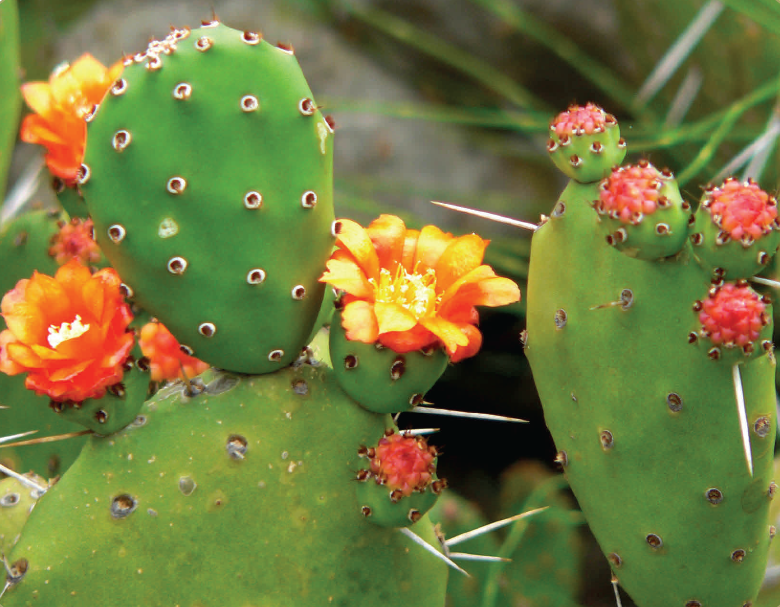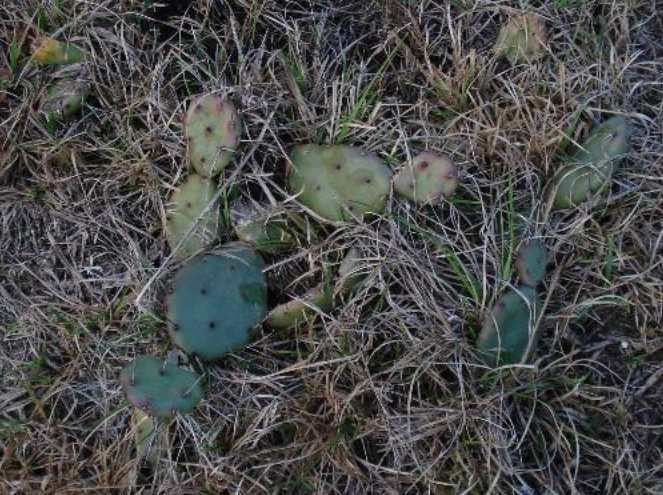
A new herbicide has recently been released called Trumpcard which contains both fluroxypyr and 2,4-D. Prickly pear control trials with Trumpcard are ongoing at the Univerisity of Florida, becuase it is expected that this combination will work as effectively as Cleanwave, which is no longer commercially available.
Jay Ferrell and Brent Sellers, Extension Weed Specialists
Prickly pear cactus is a not a wide-spread problem in Florida pastures, but can be a serious challenge to control, once it gets established. It can be particularly troublesome in pastures that are regularly mowed. This is because prickly pear spreads by fragmentation. As pads are removed from the parent plant, they have the ability to root and form new colonies. Therefore, mowing a pasture with prickly pear simply increases the infestation.
Control of prickly pear has traditionally been a slow and laborious process. The only effective herbicide was triclopyr ester (Remedy Ultra, others) mixed as a 20% solution with basal oil or diesel fuel. Although effective, this is an expensive mixture and requires each individual colony to be spot-sprayed. This has led ranchers and researchers alike to seek a new control method that will allow broadcast herbicide application.
Research conducted at the University of Florida proved that Cleanwave (fluroxypyr) at 50 fl. oz/A was an effective broadcast treatment, when applied in the fall. Unfortunately, Cleanwave is no longer available for purchase. However, Vista XRT is a commercially available herbicide that also contains fluroxypyr and is also registered for use in pastures. A new option is currently being evaluated by the University of Florida. A new herbicide has recently been released called Trumpcard, which contains both fluroxypyr and 2,4-D. Though prickly pear trials with Trumpcard have yet to be completed, it is fully expected that this combination will work as effectively as Cleanwave did, and should offer a broader spectrum of weed control.
Regardless of which herbicide you choose, do not expect 100% control with one application. It is likely that these herbicides will control a majority of the prickly pear in a pasture. However, a follow-up application of Remedy may be necessary two years later to spot-treat colonies that survived the initial application. Additionally, prickly pear pads will start to turn yellow and swell within 1-2 months of the application, but death of the pad may take 6-8 months (if not longer). It is important to be patient when conducting a prickly pear treatment program.
Although Cleanwave is no longer available, that doesn’t mean that prickly pear management must be suspended. There are two options that will work well when applied correctly. Of course, neither of these herbicides should be applied to pastures with desirable legumes.
For more information:
Prickly Pear Cactus Control in Pastures
- The How and Why of Preemergence Herbicide Incorporation for Row Crops - April 28, 2017
- Using Dicamba on Dicamba-Tolerant Crops - March 3, 2017
- Managing Dicamba Drift when using New Dicamba Resistant Cotton Varieties - January 27, 2017

